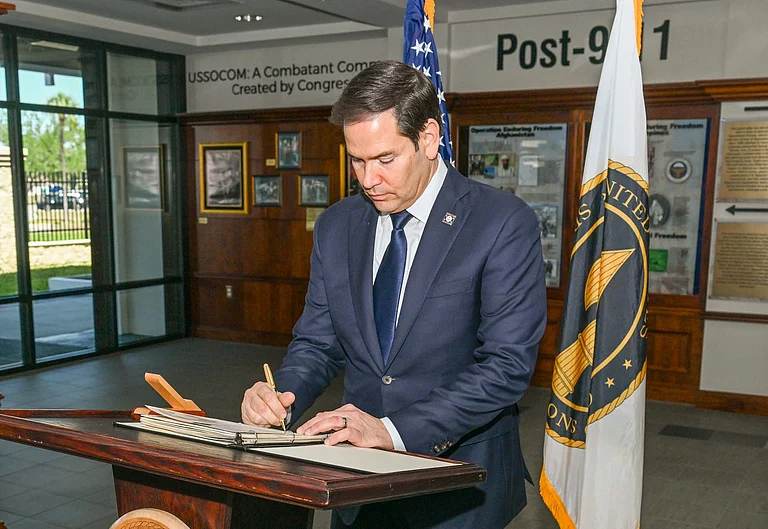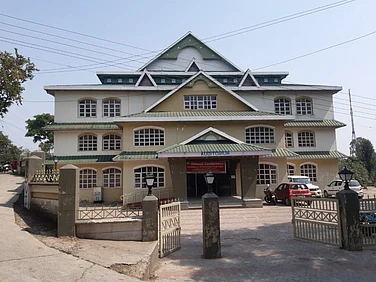As cyclone Biparjoy is about to make landfall in Kutch and Saurashtra regions in Gujarat, Dr. Mrutyunjay Mohapatra, Director General of Meteorology, India Meteorological Department, Government of India, exclusively speaks to Outlook and focuses on the ways to minimise the losses.
Excerpts from the interview:
It is being said that Cyclone Biporjoy is different in its severity and nature. What do you think?
Each Cyclone is unique just like human beings. So, it is wrong to say that it’s completely different from others. We predicted the cyclone two weeks prior to its landfall. From June 6, we started to provide the intensity forecast. From June 10 onwards, we started saying that the cyclone has moved towards Saurashtra, Kutch, and Pakistan coast. The country has come a long way in terms of science and technology, so it is no more surprising when a cyclone hits the coast. We are prepared with early detections and other mechanisms.
A Study by Roxy Mathew Koll shows that there has been a 52 per cent rise in the cyclones at the Arabian sea and a 150 per cent increase in the ‘very severe cyclone’. Do you agree? What is your analysis?
Primarily, I won’t comment on anyone’s study. I have been a member of an expert committee on cyclones, Intergovernmental Panel on Climate Change (IPCC) and worked on the impact of climate change on tropical cyclones. Analysing the cyclones across the globe, we found three significant aspects. The first is detection, second one is the attributes and third one is projection.
There are different ocean basins where the cyclone develops or intensifies. In India, we have two ocean basins — one is Bay of Bengal and another is the Arabian Sea. Unlike other ocean basins, these ocean basins experience cyclone in two seasons — pre-monsoon season of April to June and post-monsoon season of October to December. The total number of cyclones that generate in the Arabian Sea and the Bay of Bengal together is five in a year out of 80 in the globe. Only 7 per cent of the cyclones develop in our area and among them, only one develops over the Arabian Sea. So, as the frequency of cyclones in Arabian sea is less and the ocean basin doesn’t explain much, it is difficult to have any data on climate change on Arabian Sea.
However, by doing a decadal frequency analysis, we found that since 1990, the frequency of ‘extremely severe cyclones’ are showing an increasing trend over the Arabian Sea. The point of concern is whether it is attributable to the climate change. After long research, we are not confident enough to say that the climate change is solely responsible for it as there are diverse opinions. Some researchers say it is due to aerosol concentration, some attribute it to increasing wind shear.
Nevertheless, globally, it is projected that the frequency of cyclones will not increase but the intensity will be severe.
Do you think global warming has any role to play behind the formation of such intense cyclones?
Global warming and its responsibility for severe natural tragedies are scientifically proven. World Meteorological Organisation (WMO) every year publishes data of rising sea surface temperature that contributes significantly to extreme weather conditions. Even if there is not extreme weather, we should go for minimising global warming. It has an impact on everything ranging from social, political to economic lives.
If the sea surface temperature continues to rise, the fish will go deep to find solace. Fishermen will be the worst sufferer, further affecting our economy. We must remember, fish is the largest export industry of the country.
The increasing sea surface temperature also leads to the thermal expansion of water leading to the rising sea level. On the other hand, the melting glaciers will also contribute to it. This may lead to catastrophic environmental consequences.
So, what we need is the sustainable development. We must decrease the sources of anthropogenic gases and maximise the sinks —forests, ponds, water bodies etc.— to achieve the ‘net-zero' target. Apart from the macro-level policies, we can also work on our behavioural patterns like not buying more than one car or trying to travel less by cars when it’s a walking distance to achieve the target.
We fear that there may be huge life loss and damage due to Biparjoy. What is your reading?
I can assure you that there will not be several lives lost because of the past experiences. Gone are those days when thousands of people died due to cyclones. Three lakh people died in 1970 in Bangladesh due to Bhola but when Cyclone Mocha moved through Bangladesh and Myanmar, not a single life was lost in Bangladesh. In 2021, an extremely severe cyclone namely Taukte passed through Gujarat and 78 people died. But in 1998, cyclone of same intensity took away 4,000 lives.
Though not a single life should be lost, what I am trying to say that the early predictions and early actions have made things significantly better. There is a disaster management plan in the country. It is a three-tiered system — NDMA, SDMA, and DDMA. We are also helping Pakistan. We are sending regular bulletins to them in every three hours. The countries in the region consider India as a regional leader.
What can be the possible ways to minimise the losses?
Firstly, the people must be cautious and aware. In a recent survey, it is found that 95 per cent of people take cyclone warning seriously. However, while the number of lives lost has been reduced, the loss of property has increased exponentially. It is due to the developing socio-economic situation of the people. The development of coastal industry also now makes people vulnerable to more loss than the previous times. So, how to combat the losses?
We must implement impact-based forecast that we have already started. For last two years IMD, NDMA, and other agencies have come up with a joint system known as Dynamic Composite Risk Assessment. These data are available to various District Collectors, Tehsildars and BDOs of the coastal districts and they can take steps accordingly to avoid hazards. We are putting all the information on expected hazards on our website. There is a study by Power Sector Corporation of India which says that they could save Rs. 500 crores due to the early warning during Cyclone Hudhud in 2014.
Not only power sector, we have asked to stop the railway and aviation operation on June 15 as well. Kutch will be most important district. And the evacuation works have been done extensively. Moreover, we would like to request people to be within their houses. If you see thunderstorm, don’t go outside of your house and try to be within safe shelters.
Apart from the early detection and awareness, there can be safeguarding mechanisms like providing people with pucca houses that government is already doing through Pradhan Mantri Awas Yojana. We can think of putting telephone and electric line underground to minimise the hazards. People can be insured so that they can get monetary compensations for the properties lost. We have come a long way but still, there is a long way to go.



























